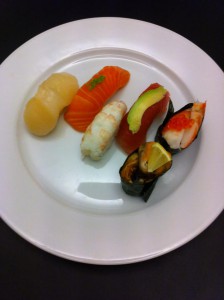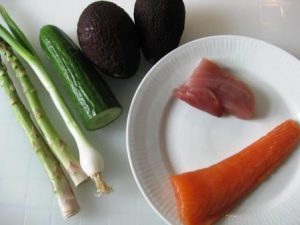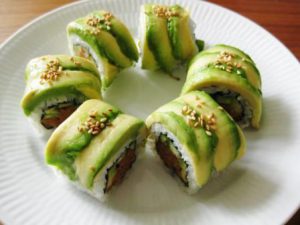
A maki sushi roll is defined as a rolled nori seaweed with sushi rice added with tasty ingredients.
Maki sushi rolls are made in several different sizes.*In Denmark we have two sizes. The small ones are called hosomaki and the big roll is called futomaki.
In Japan, maki sushi rolls are even larger.
At exclusive sushi restaurants in Tokyo, a maki roll is served that is 3 times as large as a classic Danish futomaki. Futomaki of that size does not contain fish, the Japanese do not eat large quantities of fish at once. It usually contains several different vegetables, omelet and other plant-based proteins.
Maki sushi rolls are known for their versatility as they allow for a wide range of flavor combinations and variations. They are also perfectly suited as take-away food, as sushi pieces keep their shape even if they are exposed to vibrations along the way.
Maki sushi rolls are one of the most popular forms of sushi and are enjoyed by sushi lovers worldwide.
Read more about Sushi course for beginners
_
Zoë has held sushi courses and cooking classes for A. P. Moller – Maersk, Hugo Boss Nordic, Novo Nordisk, Novartis, Velux, Gorrissen Federspiel, Beierholm revision, Elbek & Vejrup and many more.





